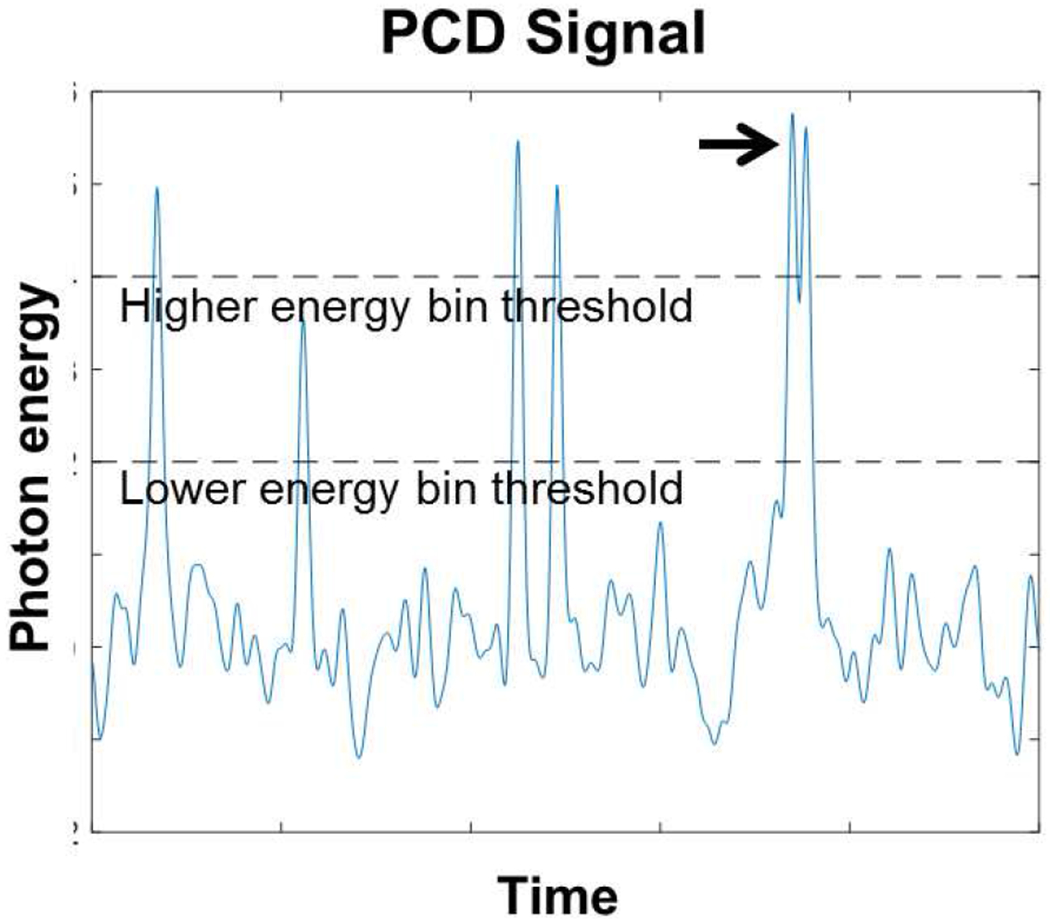Fig. 1.

Simulated example of a signal detected by a PCD. Impinging photons deposit energy in the PCD, which creates a momentary signal with amplitude ideally proportional to the deposited energy. Six photons are present in this example, each one leading to a peak. If the amplitude exceeds preset comparator thresholds (dashed lines), the PCD increments the corresponding counter. The black arrow points to an example of pileup, wherein two photons arrive in close succession. In this case, the low energy bin is incremented only once even though two photons have arrived. Pileup and charge sharing (not shown here) are two major sources of error in PCDs. If the lower energy bin threshold is set sufficiently high, it will almost never be triggered from electronic noise (which appear as random fluctuations in this plot). Hence, the number of counts stemming from electronic noise can be close to zero in practice.
